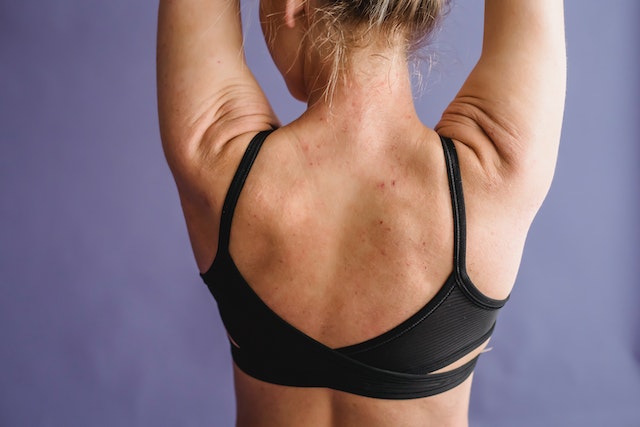The movements of the spine are produced thanks to the balance of the different muscles that make up our body and that have different functions.. Generally, muscles can be differentiated into two large groups, being one of them the muscles that are attached to the lumbar spine, which is what we know as paravertebral muscles, of which we are going to talk in depth along the next lines.
The lumbar vertebrae are a series of bones that are attached to each other through muscles and ligaments.. The paravertebral muscles They are those that jump from vertebra to vertebra and that are very attached to them throughout their entire journey.. These muscles lie at the back and are extensor muscles., in addition to being part of rotational and lateral movements. At the front of the vertebrae are the psoas and abdominal viscera..
When being the paravertebral muscles stuck to the vertebrae, when a contraction occurs, stabilizes the lumbar spine, a capacity that only these types of muscles have. In this way, they become the main responsible for achieving the stabilization of the lumbar spine, no pain.
In this way, the muscles that are furthest from the vertebrae, as it happens with the abs, have an important role, but secondary in relation to the paravertebral muscles .
Index
interspinous muscles
When talking about the paravertebral muscles, we have to know which are those that are part of them. starting with the interspinous muscles, which are small muscles that jump between the spinous processes of the vertebrae. The spinous processes are the part of the vertebra that protrudes in the midline of the back when we touch each other., being these the lumbar extensor muscles.
intertransverse muscles
The intertransverse muscles are found jumping between the transverse and mammillary processes of the lumbar vertebrae. The lateral intertransverse muscles are those that are found by jumping between the transverse processes., but there are also the medial intransverses, muscles that jump between the mammillary processes of the vertebrae.
When a contraction of the intertransverse muscles of one of the sides occurs, lateral movement of the spine occurs. If the contraction of both sides occurs at the same time, that is to say, bilateral, producing in this way a stabilization of the lumbar vertebrae as well as an extension movement.
Multifidus
Within the group of paravertebral muscles the most prominent muscle is the multifidus, a muscle that enjoys outstanding capacity and is found throughout the spine, although it has its strongest and most developed area in the lower back.
The multifidus has attachments that run from the transverse processes to the spinous processes of other vertebrae., jumping from two to four vertebral levels. All of them make a powerful muscle with a great ability to stabilize the lumbar spine..
If they contract bilaterally, they are lumbar extensor muscles.. Contraction unilaterally causes lateralization and rotation of the vertebrae..
The importance of the paravertebral muscles
Once the above is known, It is important to highlight the importance of paravertebral muscles, which are those that have a closer and more intimate relationship with the vertebrae.
Its importance is maximum, since these muscles are in charge of playing a key role to achieve a adequate lumbar stabilization. In this way, when a person suffers some type of lumbar problem or injury in this type of muscle, they suffer from contractures and can cause pain that can be very annoying for the patient.
In the event that the pain is prolonged, inhibition and loss of strength can occur in these muscles., which will mean new problems for the patient. This is one of the mechanisms that can cause a chronic pain, which is nothing more than a clear example of the key role that seta musculature has to achieve adequate stabilization of the lumbar spine.
Can you play sports with a paravertebral contracture??
If you are an athlete and have suffered a back injury, It is very possible that you are interested in knowing how you can recover as soon as possible to be able to return to sports activity. Nevertheless, It is important that you know that the return to sport must be done gradually and be aware of the exercises that can be done and which ones cannot, since in some cases it could aggravate the injury or the contractura paravertebral.
The paravertebral muscles extend all over the back, from the neck to the pelvis, coordinating with the abdominals and psoas muscle to keep the spine straight. For different reasons you can suffer from a contractura paravertebral, as for adopting an incorrect posture, that causes muscle overload, or due to injury, as a hernia or as a consequence of the sequelae of a cervical whiplash, that causes an inflammation of the muscles and later the paravertebral contracture.
Some sports practices, as is the case of swimming, are very useful for prevent middle back pain, that can cause a paravertebral contracture. Nevertheless, before starting any physical activity, it is recommended to consult a doctor. This is because exercise is contraindicated in cases in which you are in an acute crisis., although if the pain is chronic it can help prevent disability from occurring, while improving autonomy and mobility.
It is important, in any case, be aware of the importance of adapting the training to your specific circumstances in order to prevent a paravertebral contracture from occurring. It is advisable to have the services of a personal trainer to be able to adapt a training program and return safely to sports practice.
